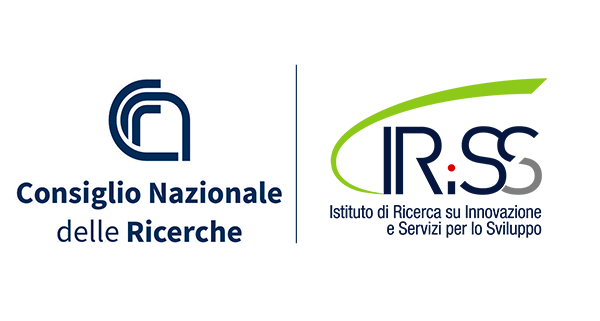Istituto di Ricerca su Innovazione e Servizi per lo Sviluppo
Resilienza - Innovazione - Sviluppo Sostenibile | Trasparenza - Organizzazione - Meritocrazia
Beauty and the Built Landscape Week (June 16-21, 2025) and International Urban Design Congress (June 17-19, 2025)
The “Beauty and the Built Landscape Week”, to be held in Viterbo, Italy, on June 16-21, 2025, aims to foster discussions on the role of beauty in urban design. The event will explore how aesthetic quality can contribute to human well-being, sustainability, and the design of livable cities. The congress, planned to be held on June 17-19, seeks to address the contemporary challenges of urban aesthetics by integrating perspectives from history, culture, environmental psychology, and design theory. It also aims to reconcile the functional and environmental aspects of urban planning with the traditional goal of creating beautiful and hospitable living environments. Five sessions are scheduled focusing on the following topics:
Sessions
Session 1: The Watermarks of Beauty
Coordinated by: Mark Alan Hewitt, Mark Alan Hewitt Architects; Steven W. Semes, University of Notre Dame, Board of Directors, BBL
What are we talking about when we talk of beauty in urban landscapes? What are its characteristics and where does it come from? Are there different types? Is it generally the product of single artists or of collective involvement? Is it innate and culturally universal or the property of diverse cultures? We begin with a brief overview of some central questions.
Session 2: Beauty and Organized Complexity
Coordinated by: Stefano Cozzolino, Research Institute for Regional and Urban Development, Dortmund, Scientific Committee, BBL; Stefano Moroni, Politecnico di Milano, Board of Directors, BBL
Urban beauty has traditionally been thought to be “a work of art”. However, authors engaging with complexity theories, such as Jane Jacobs and Christopher Alexander, have challenged this assumption, emphasising the generative power of urban life and emergent living structures. Where does the contemporary debate stand today?
Session 3: Inhabiting Beauty: Urban and Social Aspects of Environmental Aesthetic Quality
Coordinated by: Claudia Mattogno, Chair, Scientific Committee, BBL; Marichela Sepe, Coordinator GUD, Sapienza Università di Roma, Board of Directors, BBL
By focusing on the role of beauty in the design and experience of public spaces, the session will explore how elements such as form, materials, textures, and colours shape the way people perceive and interact with their surroundings. Participants are encouraged to consider how beauty can elevate the functionality of public spaces, fostering a sense of belonging and shared purpose while promoting active and inclusive engagement with urban life. Both theoretical and empirical contributions are welcomed.
Session 4: Beauty and Culture: Lifestyle, Building Types, Historical Towns and Vernacular Architecture
Coordinated by: W.w. Dīng, Nanjing University, ISUF, Director, Urban Design Dept for Historical and Cultural City Committee, Chinese Society of Urban Studies, Board of Directors, BBL; Jǐnxī Ch.n, Tsinghua University, Scientific Committee, BBL
Beauty and culture are inseparable in determining the aesthetic qualities of cities. There is no absolute beauty, and different cultures create the beauty of different cities. The aesthetic quality of historic centres, traditional and vernacular settlements, cases and methods of regeneration are discussed with a cosmopolitan attitude.
Session 5: Beauty and Liberty
Coordinated by: Stefano Cozzolino, Research Institute for Regional and Urban Development, Dortmund, Scientific Committee, BBL; Stefano Moroni, Politecnico di Milano, Board of Directors, BBL
Harmony and order are two conceptual pillars of beauty, often operationalised through stringent, highly prescriptive regulatory frameworks that can stifle individual design creativity and freedom. As observed by Marco Romano, among others, this approach can have significant negative repercussions. What should the role of regulation be?
In addition to the congress, the BBL week will feature exhibitions, films, and tours in historic sites of Viterbo and its surroundings.
Call for Abstracts and Projects
The congress welcomes both theoretical and design contributions focusing on the intersection of beauty and urban design. Participants will be selected based on the relevance of their contributions to:
- Evidence and relevance of the aesthetic intent
- Urban design scale and nature of the inquiry or project.
Submission Guidelines
- Deadline: March 31, 2025 (late submissions may be considered if space allows).
- Submission Format:
- A PDF proposal (max 100 words) in English, including the title and description of the presentation (theory or project) and up to 3 visual elements.
- A short CV (max 100 words).
- The proposal should indicate which session it aligns with.
Selection & Publication Process
- April 14, 2025: Notification of acceptance (with possible revision requests).
- May 19, 2025: Submission of a 1,000-word draft and a draft PowerPoint presentation (PDF format).
- June 2, 2025: Final version of the conference presentation.
- January 5, 2026: Final revised contributions for publication in the conference proceedings.
Participation:
- Attendance is free and open to scholars and practitioners, both in person and online (registration required).
- Active participation (presenting) is only available in person.
The congress seeks to encourage an interdisciplinary approach, welcoming contributions from aesthetics, urban morphology, phenomenology, experimental psychology, and design strategies that explicitly address urban beauty.
